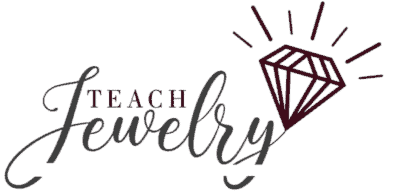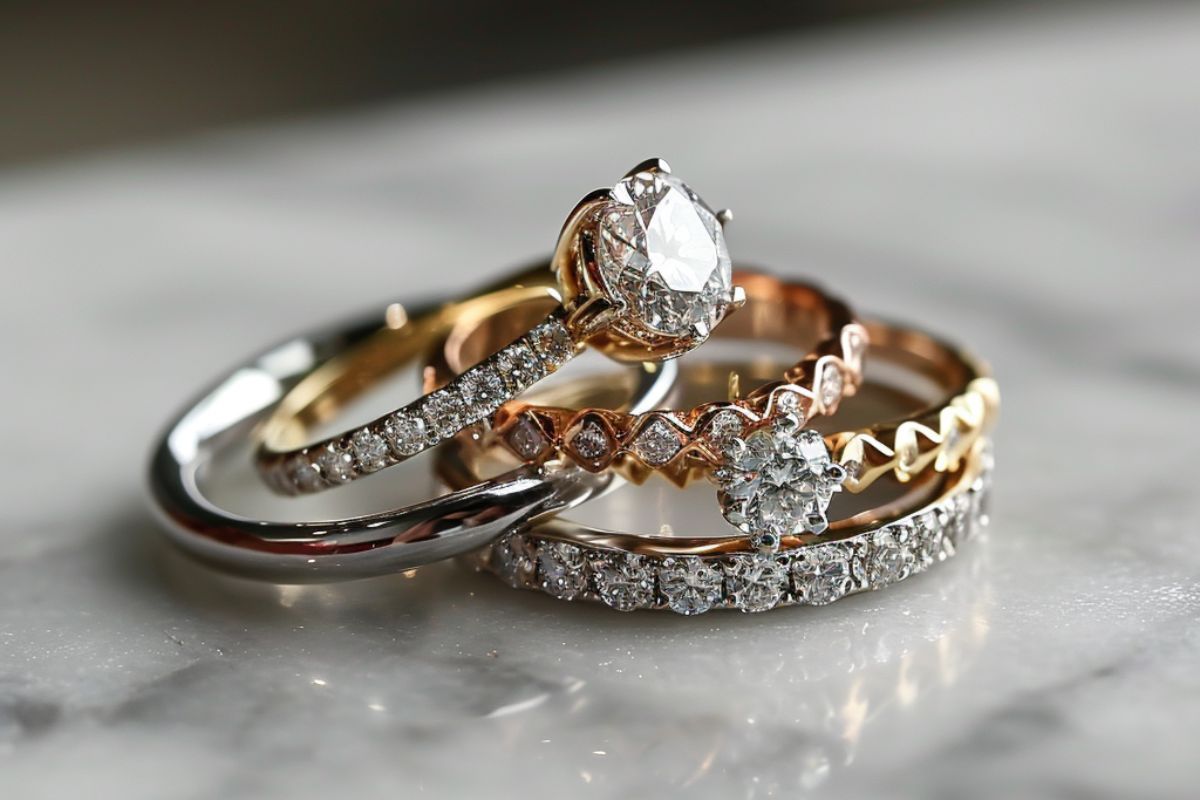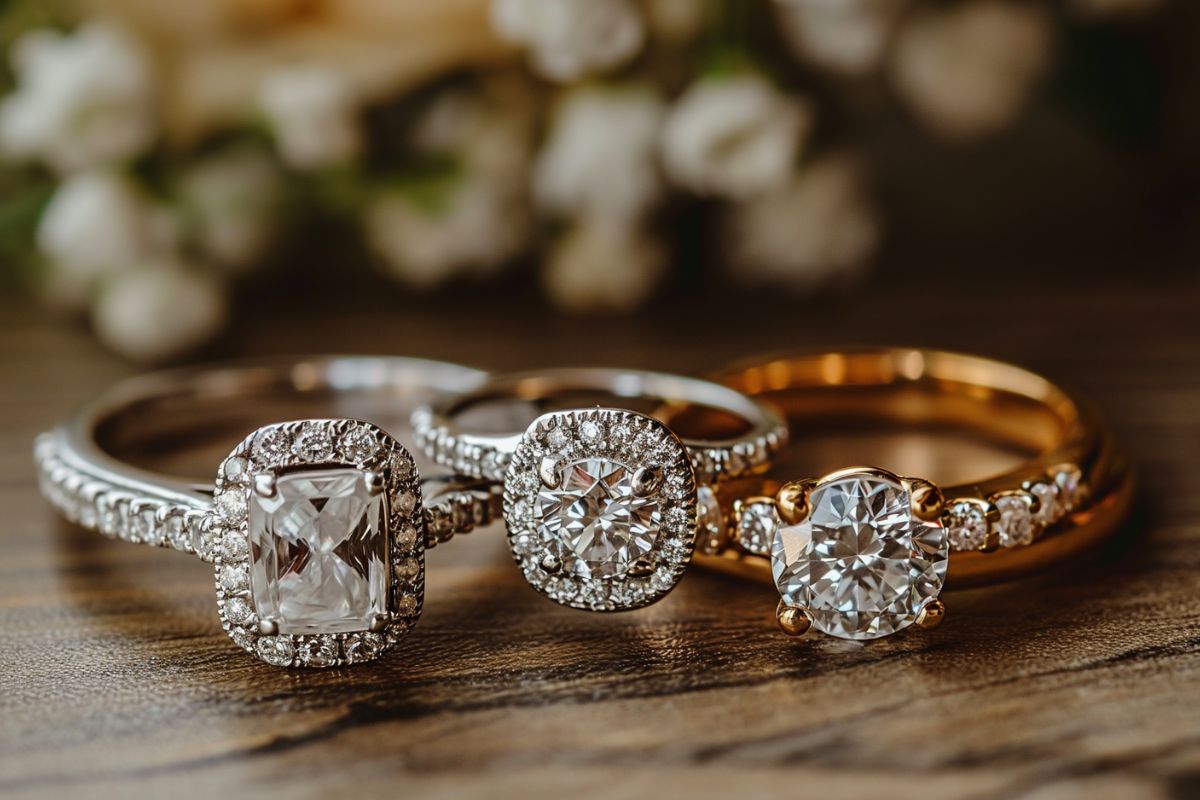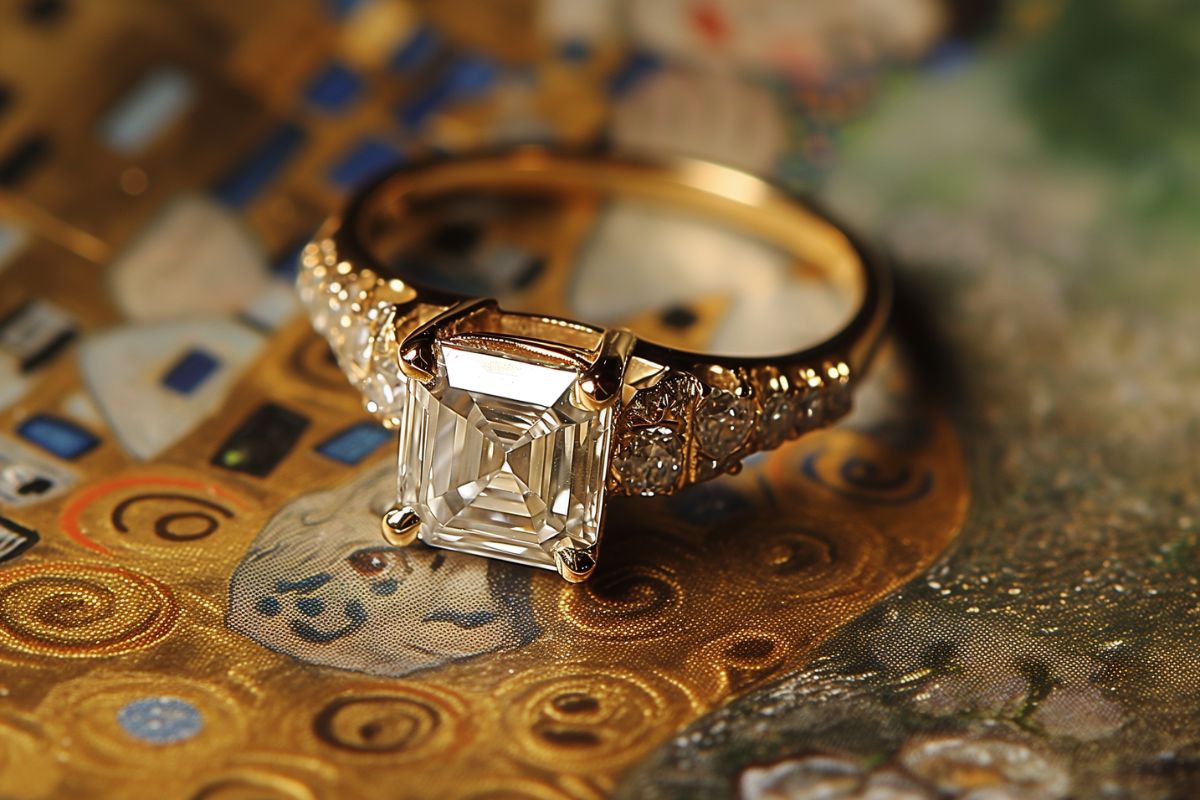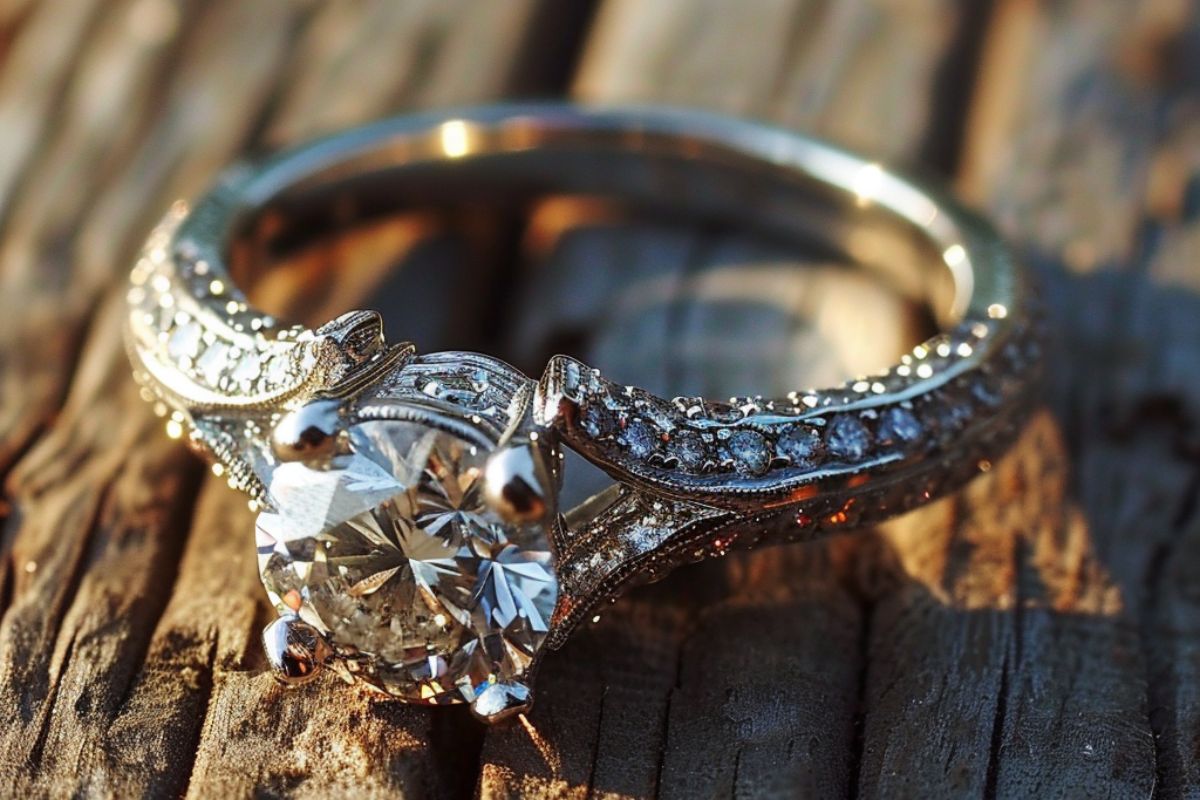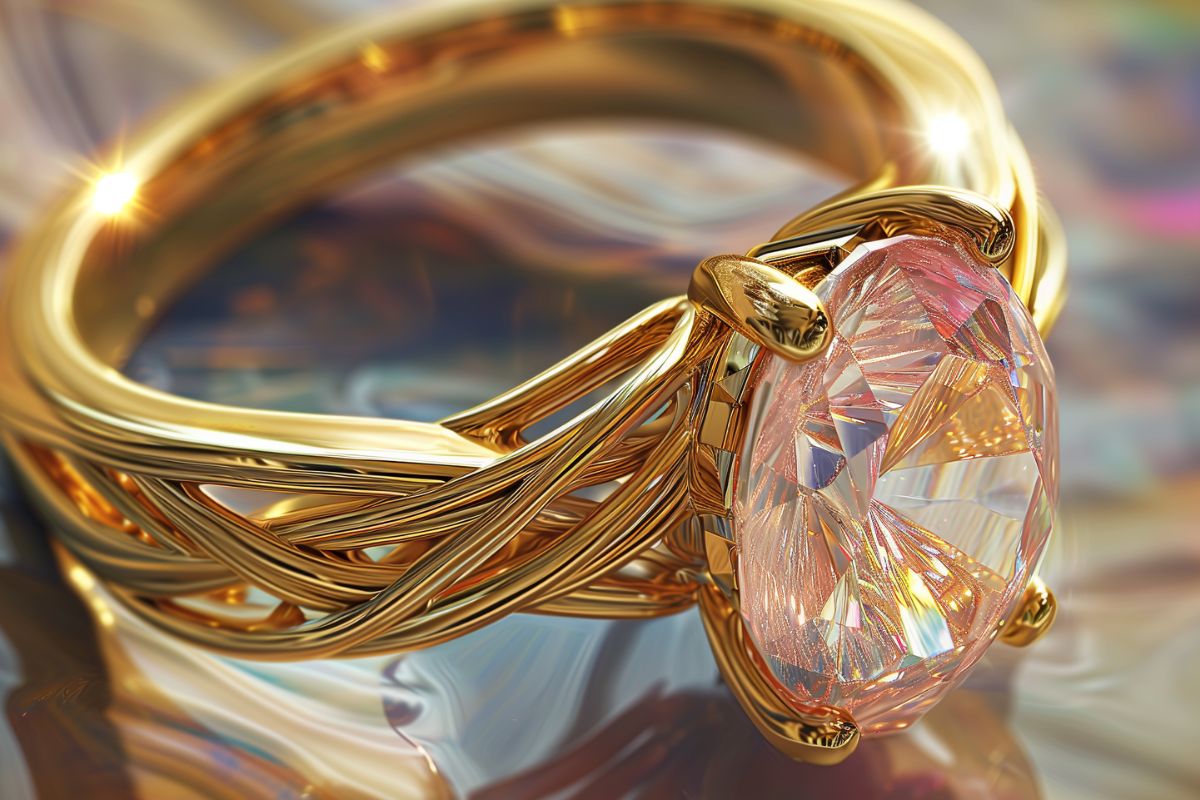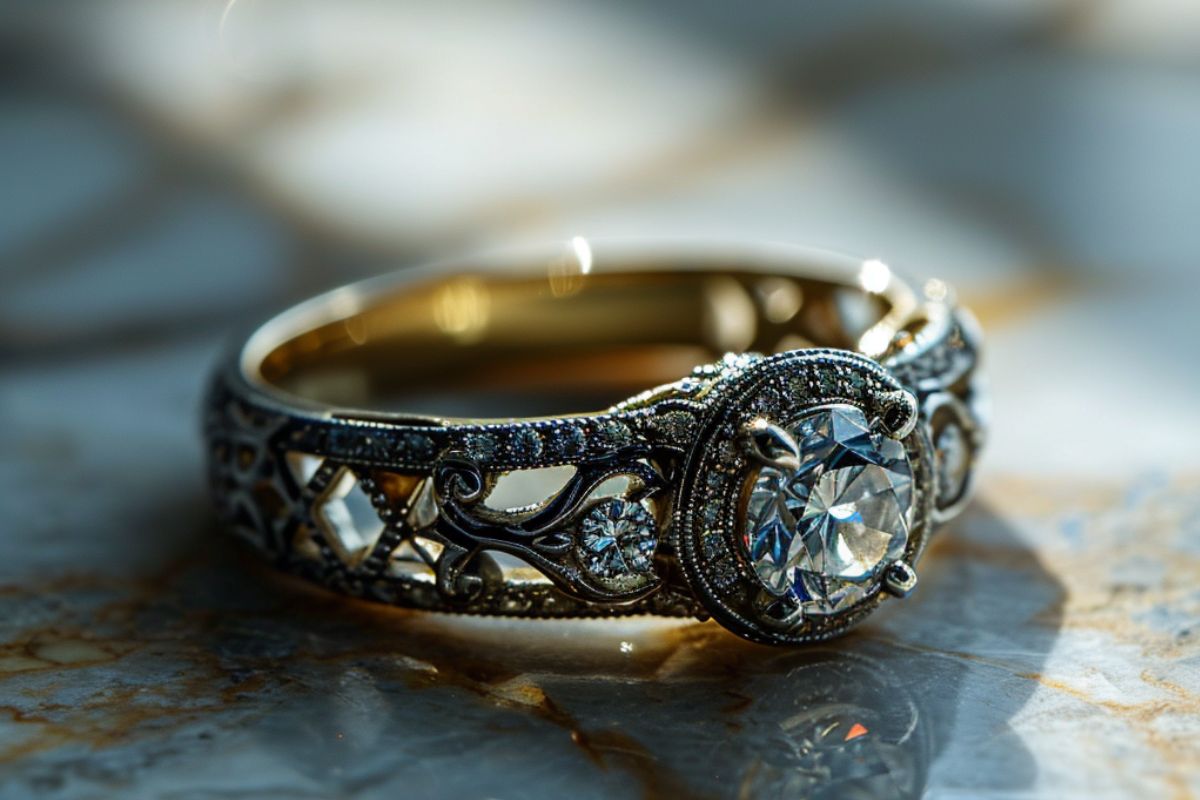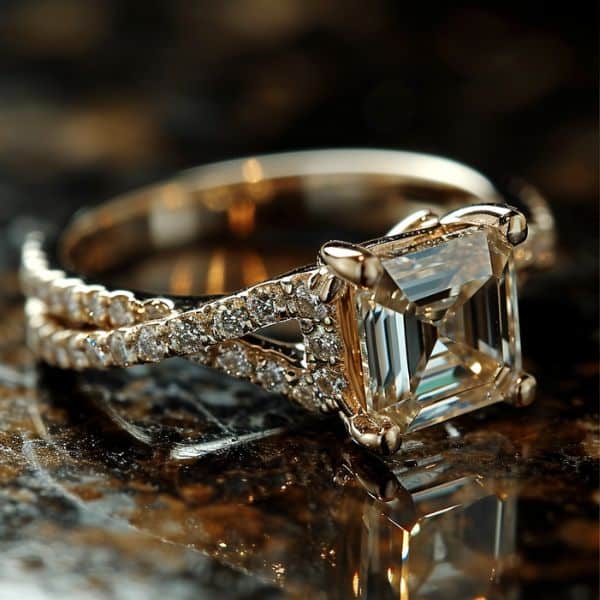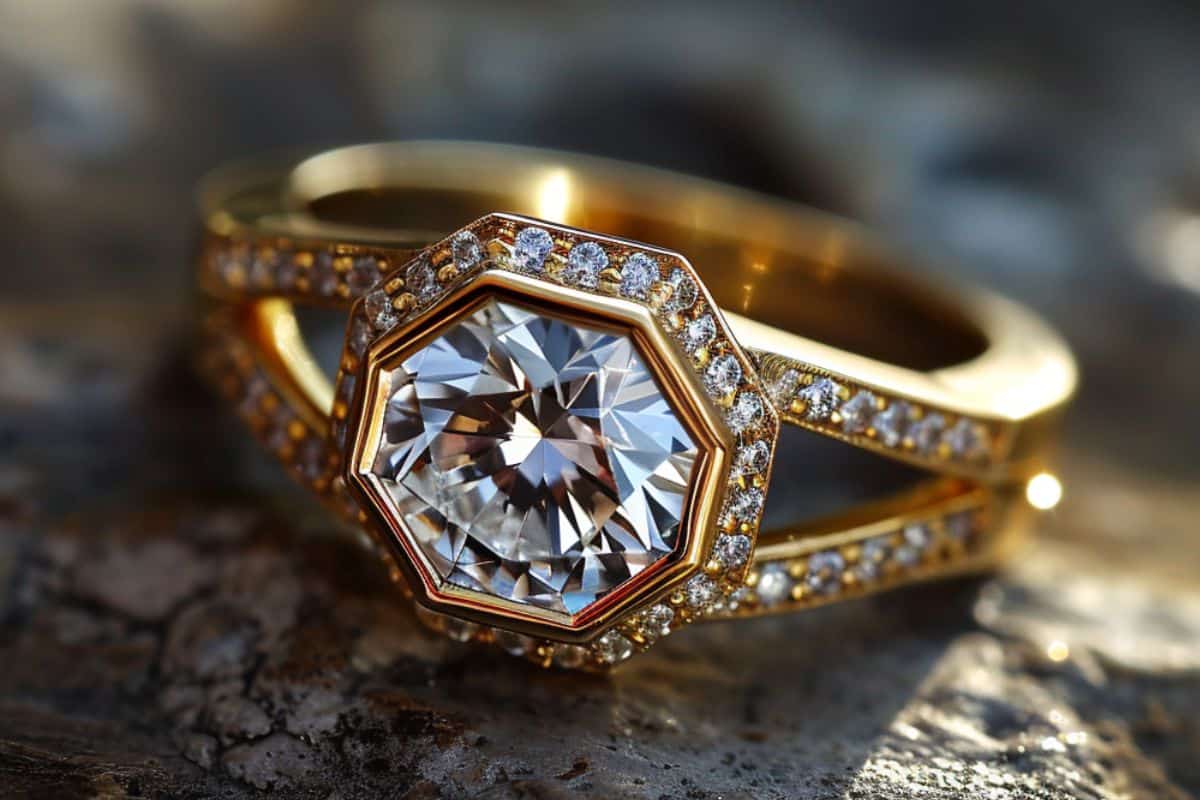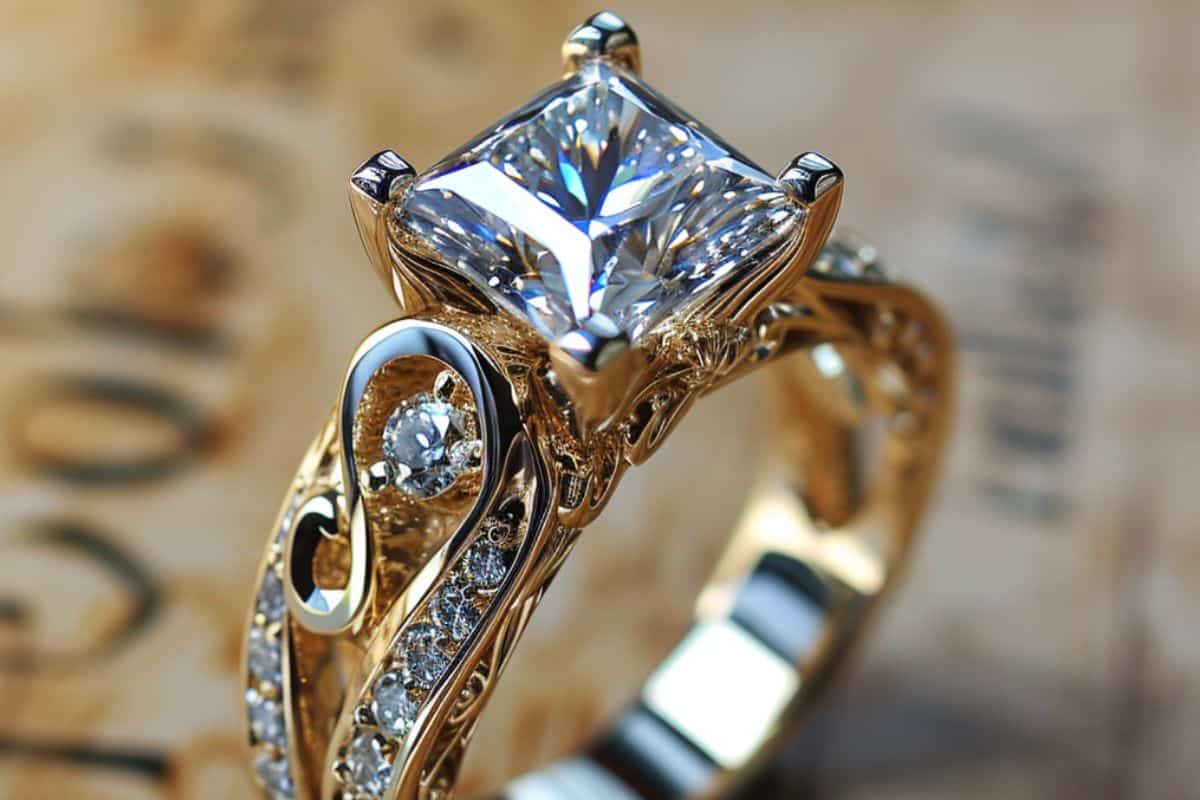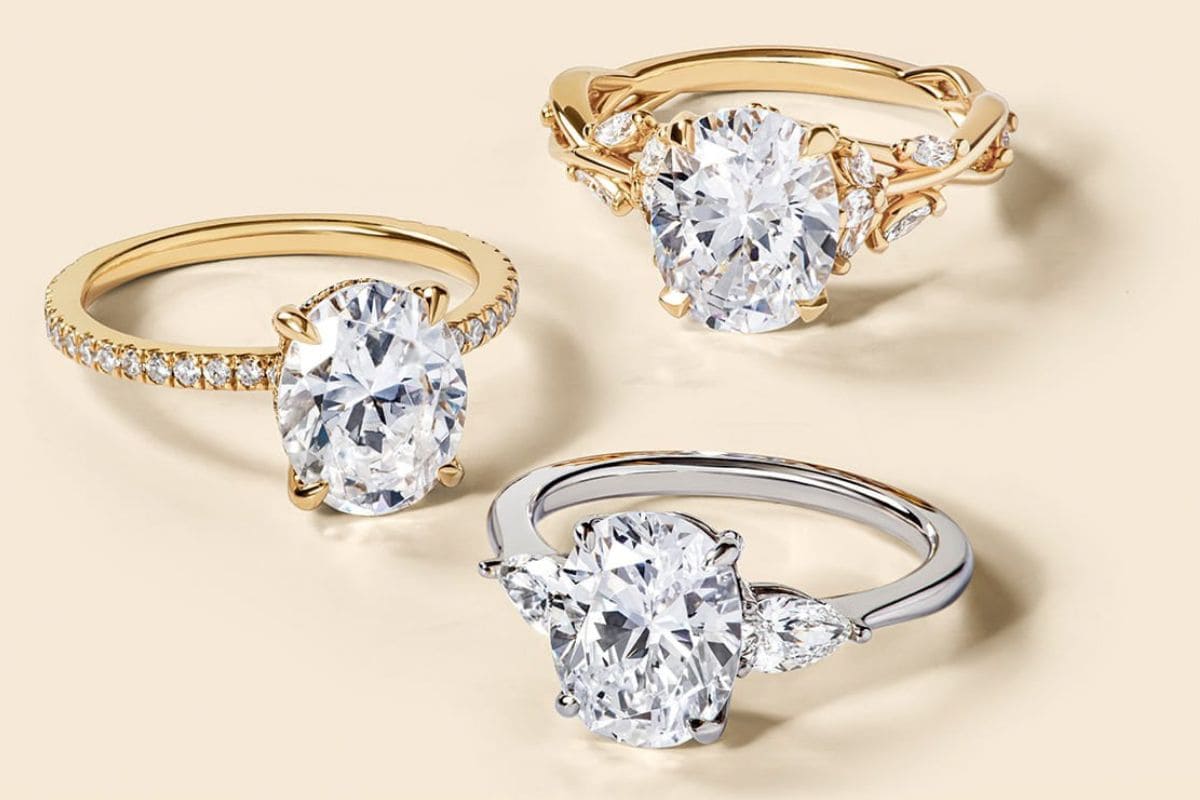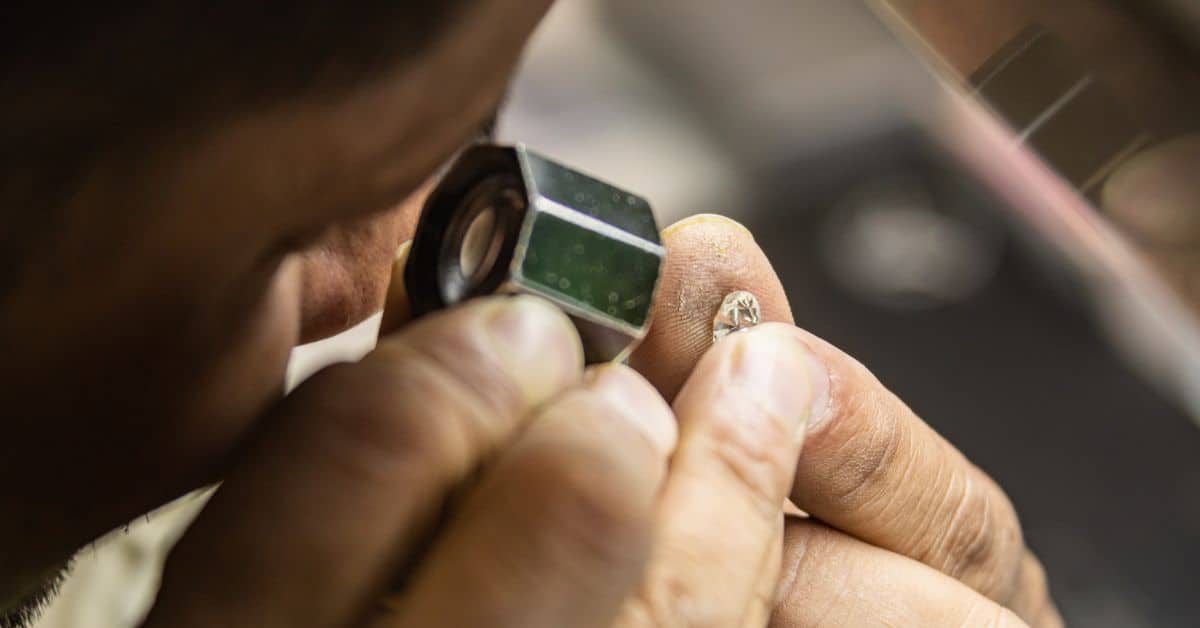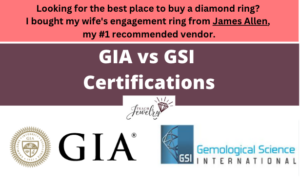
Diamond grading reports can give buyers confidence in its qualities because it’s been verified by a third party. The average buyer often can’t tell the difference between various diamond traits, so a report from a credible organization does the detailed work for them.
Two popular institutions that offer diamond reports are the Gemological Institute of America (GIA) and Gemological Science International (GSI).
My bottom line recommendation is to choose a GIA diamond because many in the industry consider their rigorous grading process and criteria to be the most reliable and consistent.
But let’s compare the GIA versus GSI and learn what to expect from each report, how to read them, and the grades they provide relative to each other.
What is a GIA Diamond Report?
The GIA is a nonprofit organization that provides a range of services to the diamond industry, including research and education. It was established in 1931 and is best known for its natural diamond reports.
These reports aren’t its only offering to prospective buyers. Additional reports include:
- Natural colored diamonds
- Laboratory-grown
- Colored stones
- Pearls
- Determining the material of a stone
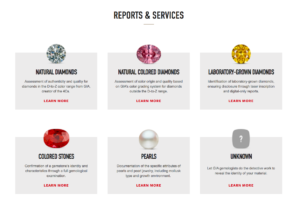
Although they offer multiple types of reports, the GIA is considered the preeminent institution for asserting the qualities of a natural diamond.
It’s important to know it doesn’t appraise their value to determine their monetary worth.
Instead, the gemologists objectively note where the diamond falls along its grading scale.
The GIA developed the standard almost every similar organization uses to assess diamonds: the four Cs of carat, color, clarity, and cut. A GIA report consists of grading the diamond against these criteria.
When a diamond is shipped to its office, any identifying marks on it are removed to ensure the gemologist isn’t biased based on its source.
The first test involves learning whether it’s a natural or lab grown diamond, because its value drops significantly if it was grown in a lab.
When the gemologist is grading its color, cut, and clarity, they’ll also check for clarity-enhancement procedures. Some manufacturers can remove or color in dark marks or spots in a diamond to make it appear more clean, but this has the potential to lower its overall value.
Lastly, the GIA weighs the diamond to note its carat weight.
All of these metrics are consolidated into a grading report that tells the buyer everything they need to know before their purchase.
Popular online jewelers such as James Allen, where I bought my wife’s engagement ring, sell GIA diamonds, and you’ll also find them at many local stores.
How to Read a GIA Report
GIA reports are intuitive to read because they provide the grading scales on the left side.
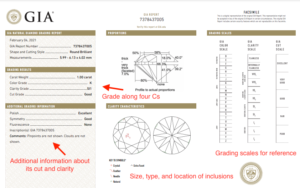
The top section identifies the diamond, noting the grading report number, the shape and cutting style, and measurements.
Below, the grading results show how it scored across the four Cs. Use the scales on the right to learn where its grade ranks in terms of quality.
In the “Additional Grading Information Section,” you’ll see its polish, symmetry, fluorescence, and any comments about its clarity, such as “surface graining not shown.”
In the middle section of a GIA report, there’s a diagram of its proportions and a clarity characteristics plot. The plot shows you which inclusions are present, in addition to their size and location on the diamond.
You shouldn’t rely on this inclusion plot to learn whether a diamond has visible inclusions. Instead, view it in person or through high-quality images.
I’ve seen instances where the GIA report shows only a few inclusions, but they’re highly visible to the naked eye. On the other hand, the report might show several flaws scattered across the table, but they aren’t large enough to notice.
Some in-person retailers will have a physical copy of the GIA report for their diamonds, while others will show where it can be found online.
What is a GSI Certification?
GSI is a newcomer on the scene of grading diamonds. In fact, it’s considered the only prominent gem laboratory formed in the last 20 years.
It has offices around the world in places such as India, Belgium, and Hong Kong, but it’s headquartered in New York City.
GSI earned a market share by partnering with large players in the jewelry industry such as Kay, Zales, and Jared.
If you’re shopping at one of these retailers, it’s likely many of their diamonds will sit beside a GSI report.
It built the relationship with those retailers by offering a fast turnaround and not grading diamonds as strictly as competitors.
Like the GIA and others in the industry like GCAL or HRD, it offers more than reports. Its lab services division offers diamond sorting, light analysis to test brilliance, fire, and scintillation, and laser inscription.
Most buyers are concerned with their grading reports. For natural diamonds, they offer four distinct reports:
- Full Diamond Examination Report (FDX)
- Intermediate Diamond Examination Report (IDX)
- Special Diamond Examination Report (SDX)
- Modified Diamond Examination Report (MDX)
In sum, the latter three reports are scaled down versions of the full report. As a buyer, your diamond will likely come with the FDX, so we’ll analyze that report in more detail.
How to Read a GSI Certification
GSI reports are read similar to ones from the GIA. It begins by noting the report number so it can be verified online, and then lists its weight, shape, and measurements.
The four Cs are included in this main section, so you can reference them with the scales at the bottom of the report.
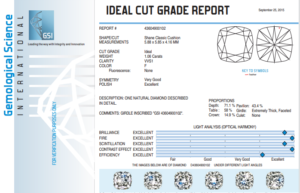
One difference between GSI and GIA reports is GSI doesn’t provide a key for interpreting the inclusion plot. Whether it’s filled with red circles, wavy lines, or green triangles, you’ll have to find the inclusion symbols elsewhere.
GSI reports list each measurement of its proportions, but you should be most concerned with its girdle and cut grade.
An extremely thin girdle means it’s vulnerable to chipping. An extremely thick one can result in a “fish-eye” effect that allows you to see a reflection of the girdle inside. Ideally, it will be between thin and slightly thick.
The cut grade on a GSI report often indicates whether the depth, table, crown, and pavilion percentages are ideal or not. This grade has the most impact on its light performance.
It’s difficult for buyers to interpret those percentages, so its cut grade acts as a shortcut.
Like the GIA, GSI puts all their reports online, so whether you’re looking for a diamond in person or at an online retailer, you can verify the diamond and report by searching for the report number.
How are GIA and GSI Reports Different?
GIA and GSI reports look different but generally measure the same aspects of a diamond. What’s most important about a grading report is its accuracy.
That’s because the grades on the report, especially the four Cs, directly impact its market value.
If you buy a diamond based on a report that isn’t as rigorous, it could cost you. So it’s important to know what to expect from GIA and GSI reports in regard to consistency, strictness, and reliability.
Carat
Carat is an objective measurement of the diamond’s weight, so there’s no concern over inconsistencies between the GIA and GSI. The gemologists simply place the diamond on a scale and record its weight.
An accurate carat weight is important because it’s the quality that most impacts the price of a diamond.
Even a change in a few hundredths of carat can increase the price by hundreds of dollars. Always verify a diamond’s weight with a certificate before purchasing.
Cut
GSI and GIA have slight differences in how they designate cut. GSI cut grades are:
- Ideal
- Excellent
- Very good
- Good
- Fair
- Poor
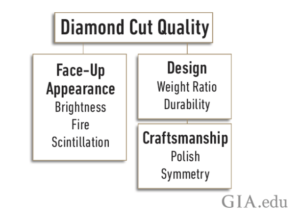
GIA doesn’t include an “Ideal” grade, so the highest a diamond can receive is “Excellent.”
Cut isn’t as objective as carat, but there are more tangible metrics compared to clarity and color. For example, it takes into proportions like its depth and table percentage.
While you may see the same diamond have one cut grade higher when it’s assessed by GSI versus GIA, you shouldn’t worry about persistent differences in this area.
If a diamond is graded ideal by GSI, that corresponds to excellent from the GIA.
What’s more important is that you understand which proportions and measurements are ideal. Even diamonds graded excellent by the GIA aren’t equal, so you’ll want to ensure it truly exhibits strong brilliance by reading the details of the report.
Clarity
Clarity refers to the extent of inclusions present in a diamond, so the more noticeable and impactful they are, the lower grade it will receive.
Clarity is a subjective measurement because gemologists are taking into account not only the types of inclusions, but their size and location.
What one gemologist determines is a VVS1 (very, very slightly included) clarity, another might decide is a VVS2.
The better clarity grade would result in a higher sales price.
The industry’s expectation is the GIA will often grade clarity one level stricter than GSI.
That means if a GIA diamond is graded a VS2 clarity, you would expect a VS1 grade from GSI.
It’s not that GSI is incorrectly determining the clarity. It’s a subjective measurement, so you can expect some differences. The GIA is considered the most strict lab.
You might think one grade of difference doesn’t matter, but real examples show otherwise. Let’s compare the prices of diamonds from online retailer James Allen with the following qualities:
- Carat: 1.40
- Cut: Ideal
- Color: G
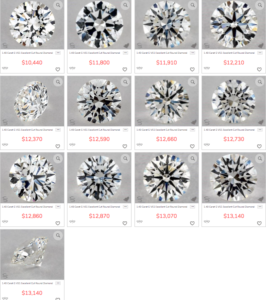
For diamonds with those qualities and a VS1 clarity, the average price is $12,445, with a range of $10,440-$13,140.
For a diamond with a VS2 clarity, the average price is $11,256, and the range is $10,510-$12,480.
That’s an 11 percent average premium to be paid for one clarity grade higher, which in this case is $1,189.
It’s important the diamond isn’t given a lenient grade on clarity because the buyer has to pay more. That’s why many buyers prioritize GIA certificates versus ones from GSI.
Color
Color also isn’t an objective measurement. It’s graded based on how colorless the diamond is, or how much it lacks a yellow or brown tint.
How it relates to price is the same as clarity. A higher color grade, even a difference of one level, impacts its market value.

The industry generally expects GSI to grade diamond color one or two grades higher than the GIA. So if GSI designates a diamond’s color as G, the GIA may give it an H or I.
To the naked eye, those distinctions are hard to tell apart, but sellers will charge a higher price if it’s given a G color instead of an H or I.
In general, you can expect a 10-15 percent higher price for every step up the color scale. A difference of one two or color could cost you hundreds of dollars.
How Does Each Report Affect a Diamond’s Price?
We’ve discussed how the grades a diamond is given on its certification affects its sales price.
The name of the organization at the top of the certificate also has an impact, and this is true of the GIA and GSI.
Diamond sellers, and many buyers, know GSI is considered more lenient in their grading and may differ from the GIA on one or two grades across color and clarity.
This information, and GIA’s reputation as the most reliable organization, is factored into the price.
You’ll often pay more for a diamond certified by the GIA than GSI if the grades are the same.
Sellers know buyers want confidence in the report, and the GIA provides that. They charge a premium for diamonds graded by the GIA, and buyers accept that.
If a seller sent the same diamond to both organizations, it would often sell for a higher price if displayed next to the GIA certificate.
How Does the GIA and GSI Compare to Other Reports?
There are several prominent organizations that grade the qualities of diamonds. If you’re browsing online or in-person, you might come across reports from:
- Hoge Raad voor Diamante (HRD)
- The American Gem Society (AGS)
- Gem Certification & Assurance Lab (GCAL)
- International Gemological Institute (IGI)
- European Gemological Laboratory (EGL)
Each of these organizations provide similar reports to the GIA and GSI, where they examine the diamond and determine its proportions, whether it’s real or lab-grown, and its grades across the four Cs.
Studies have shown there’s often differences in how each organization grades diamonds. Usually, it’s one or two grades on the clarity or color scale.
While these distinctions might seem minor, it can affect the price of the diamond by hundreds of dollars.
In the United States, the GIA and AGS are known for having some of the most rigorous standards.
Why are GIA Diamonds the Right Choice?
Diamonds with a GIA report are the right choice because the industry often views GIA is the most reliable, consistent grading organization.
They give buyers confidence in the quality of the diamond and don’t apply loose standards that favor the seller.
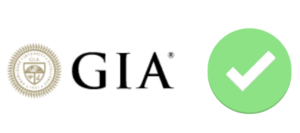
Slight differences in quality, whether cut, clarity, or color, can significantly affect the value of the diamond, so you want the strictest standards applied.
The GIA brings almost 100 years of experience and a strong reputation in the industry.
Explore a range of diamonds online and in-person before deciding which is right for you.
Always ask for the report, and verify it’s referring to the diamond you’re considering. By examining a range of GIA diamonds, you can find the perfect one for you.

Jacob Clarke
Jacob Clarke is the founder of TeachJewelry.com.
He earned an Applied Jewelry Professional Diploma from the Gemological Institute of America (GIA) and now brings you essential information about diamonds, settings, and more.
Jacob has consulted with leading jewelry brands, and his work has been cited in Clean Origin, Diamond Nexus and industry publications.
He's also a member of the International Gem Society.
He enjoys discussing jewelry with readers, so contact him with any questions at jacob.clarke@teachjewelry.com.
